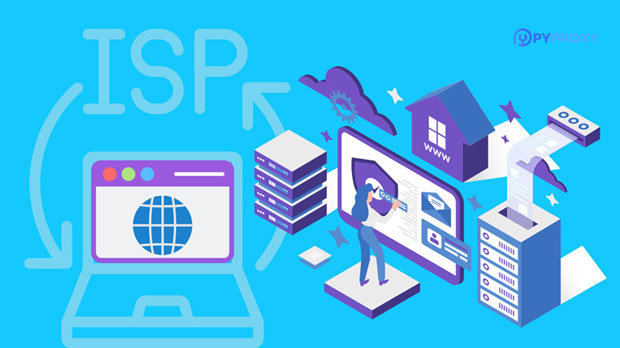A proxy server is an intermediary server that sits between a user's device and the internet. It allows users to access websites indirectly by routing traffic through the proxy, effectively masking the user's real IP address. In the context of web scraping and data collection, proxies are widely used to overcome challenges like rate limits, IP blocking, and geographic restrictions. Proxies help ensure that data collection operations remain anonymous, efficient, and uninterrupted. This article explores the critical role of proxies in web scraping, their importance in overcoming obstacles, and their application in various data collection scenarios. Understanding Proxies in the Context of Web ScrapingIn the field of web scraping, proxies play a significant role in maintaining anonymity and avoiding detection. Web scraping refers to the practice of automatically extracting data from websites. However, websites often have mechanisms in place to detect and block scrapers, particularly if they are scraping large volumes of data in a short time frame. Proxies mitigate this problem by rotating IP addresses, making it difficult for the website to recognize a single entity performing the scraping.Proxies also allow scrapers to bypass geographical restrictions and access content that might be blocked in certain regions. For example, a user in one country might use a proxy server located in another country to access content that is only available to that region. This enables web scrapers to gather a more diverse set of data, especially from global websites.Why Are Proxies Important for Data Collection?Data collection involves gathering information from various sources for analysis, reporting, or decision-making. Whether it’s for market research, competitive analysis, or academic purposes, proxies are essential to ensure that the collection process is smooth and uninterrupted.One of the main reasons proxies are used in data collection is to avoid detection. Many websites monitor the number of requests coming from a single IP address. If an IP address sends too many requests in a short period, it is likely to be flagged and blocked. Proxies, especially rotating proxies, allow the requests to come from different IP addresses, reducing the likelihood of triggering these anti-scraping mechanisms.Types of Proxies Used in Web ScrapingWhen it comes to web scraping and data collection, there are different types of proxies to consider, each with its own unique characteristics and applications.1. datacenter proxies: These are fast and affordable proxies that are not associated with an Internet Service Provider (ISP). While they are highly efficient, they can be easily identified and blocked by websites due to their predictable IP addresses.2. residential proxies: These proxies are tied to real residential IP addresses provided by ISPs. Because they are associated with genuine users, residential proxies are much harder to detect and block. However, they tend to be more expensive than datacenter proxies.3. Rotating Proxies: These proxies automatically rotate IP addresses at regular intervals. They are especially useful in avoiding detection because they ensure that requests come from a variety of IP addresses. This reduces the chances of a website flagging the activity as suspicious.4. Private Proxies: Private proxies are dedicated to a single user or entity. This means that the proxy is not shared with anyone else, making it more reliable and secure for sensitive tasks.How Proxies Help Overcome Obstacles in Web ScrapingIn addition to bypassing IP blocks, proxies help web scrapers overcome several other common challenges.1. Rate Limiting: Websites often implement rate-limiting mechanisms to restrict how frequently requests can be made from a single IP address. By using proxies, web scrapers can distribute requests across multiple IP addresses, allowing them to bypass these rate limits and scrape data more efficiently.2. Captcha Systems: Some websites use CAPTCHA systems to verify that the user is human. Proxies do not directly bypass CAPTCHAs, but they can be used in conjunction with CAPTCHA-solving services to automate the process and maintain a seamless scraping operation.3. Geographical Restrictions: Many websites restrict access to their content based on the user’s geographic location. By using proxies located in different countries, web scrapers can access region-specific content and gather data that would otherwise be unavailable.4. Anonymity: One of the main benefits of using proxies is the ability to remain anonymous while scraping data. This is particularly important in cases where scraping might violate a website’s terms of service, as it helps prevent the scraper from being identified and blocked.Practical Applications of Proxies in Data CollectionProxies have a wide range of applications in various data collection scenarios. Below are some of the most common ways proxies are used:1. Market Research: Companies use proxies to gather data on competitors, pricing, and customer sentiment. By using proxies to access competitor websites, businesses can collect valuable insights without revealing their identity or risking being blocked.2. SEO Monitoring: Proxies are commonly used to track search engine rankings and monitor keyword performance across different geographic locations. This is especially useful for digital marketers who want to understand how their website ranks in different regions.3. Social Media Scraping: Proxies are essential for gathering data from social media platforms. Due to the large volume of users and the potential for IP blocking, proxies ensure that social media scrapers can collect posts, trends, and other relevant data without interruption.4. Price Comparison: Many e-commerce companies use proxies to track and compare prices across multiple online stores. By rotating proxies, they can continuously monitor prices without triggering anti-scraping measures.Challenges and Ethical ConsiderationsWhile proxies are incredibly useful, there are ethical considerations that must be kept in mind. For instance, scraping websites without permission can violate terms of service, and using proxies to bypass restrictions can be seen as a form of unethical behavior. Therefore, it is essential for businesses and individuals engaging in data collection to be aware of the legal and ethical implications of their actions.Moreover, proxies can be costly, particularly residential and private proxies, which might make large-scale scraping operations expensive. Therefore, businesses must carefully weigh the costs against the benefits of using proxies for their scraping activities.In conclusion, proxies are indispensable tools in the world of web scraping and data collection. They help overcome various technical barriers, such as IP blocking, rate limiting, and geographical restrictions, ensuring that scrapers can collect the data they need without disruption. By using the right type of proxy and employing best practices, businesses and individuals can gather valuable information efficiently and responsibly. However, ethical considerations should always be kept in mind to ensure that data collection activities remain within legal and acceptable boundaries.
Jun 20, 2025



































































